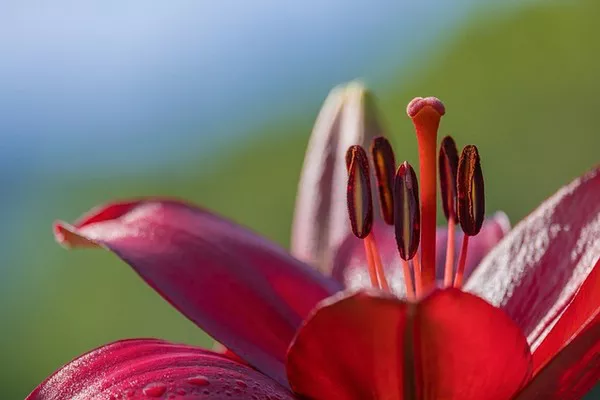In the language of flowers, each blossom carries a unique significance, speaking volumes beyond mere aesthetics. From declarations of love to expressions of sympathy, flowers have long served as messengers of human emotions. Among their varied meanings, the symbolism of goodbye holds a poignant place, encapsulating the bittersweet essence of parting ways. In this article, we embark on a journey through the floral realm, unraveling the nuanced meanings behind flowers associated with farewell.
Historical Roots: Tracing the Origins of Floral Farewells
The tradition of using flowers to convey farewells traces back centuries, deeply rooted in cultural practices and historical contexts. Across different civilizations and epochs, flowers have played diverse roles in rituals surrounding departure and loss.
In ancient Greece, for instance, mourners adorned graves with flowers as a symbol of remembrance and reverence for the departed. The Greeks also incorporated floral wreaths into funeral rites, symbolizing the eternal cycle of life and death. Similarly, in ancient Egypt, flowers held significant religious symbolism, often accompanying the deceased on their journey to the afterlife.
During the Victorian era, a period marked by elaborate social customs and strict etiquette, the language of flowers flourished. Known as floriography, this intricate system of assigning meanings to different blooms allowed individuals to convey sentiments discreetly through floral arrangements. As the Victorian fascination with symbolism permeated various aspects of life, flowers became a popular means of expressing emotions, including bidding farewell to loved ones.
The Lily: Emblem of Purity and Departure
Among the myriad flowers associated with farewell, the lily stands out as a timeless symbol of purity, renewal, and transcendence. With its graceful form and delicate fragrance, the lily evokes a sense of ethereal beauty, embodying the ephemeral nature of life’s transitions.
In Christian iconography, the lily holds profound significance, often depicted alongside representations of the Virgin Mary or as a symbol of the resurrection. As such, lilies are frequently chosen for funeral services and memorial arrangements, serving as a poignant reminder of the hope and solace found in faith.
In addition to its religious connotations, the lily carries broader symbolism across cultures and traditions. In Japanese culture, for example, the white lily symbolizes purity of heart and soul, making it a fitting choice for farewell tributes.
The Rose: A Multifaceted Symbol of Farewell
Renowned for its exquisite beauty and rich symbolism, the rose reigns supreme as one of the most versatile flowers in the realm of farewell gestures. With its velvety petals and intoxicating aroma, the rose embodies a spectrum of emotions, from love and passion to longing and loss.
In the language of flowers, different hues of roses convey distinct messages, allowing individuals to express nuanced sentiments in their farewells. While red roses symbolize enduring love and affection, white roses evoke purity and reverence, making them a popular choice for funerals and memorial services.
Beyond its symbolic associations, the rose holds practical significance in funeral customs and traditions around the world. In many cultures, mourners place roses atop caskets or graves as a final gesture of respect and farewell, honoring the memory of the departed with nature’s most exquisite bloom.
The Chrysanthemum: A Symbol of Resilience and Adieu
In Eastern cultures, particularly in Japan and China, the chrysanthemum occupies a revered place as a symbol of longevity, resilience, and farewell. With its intricate petals and vibrant hues, the chrysanthemum embodies the beauty of impermanence, reminding us of life’s transient nature.
In Japan, the chrysanthemum holds special significance as the imperial crest, symbolizing the emperor and the imperial family. As such, chrysanthemums are often associated with ceremonies and rituals honoring ancestors and commemorating the passage of time.
In the language of flowers, the chrysanthemum conveys messages of admiration, gratitude, and fond farewell, making it a fitting choice for expressing heartfelt sentiments in times of parting. Whether woven into funeral wreaths or presented as a token of appreciation, chrysanthemums serve as poignant reminders of the enduring bonds that transcend earthly existence.
The Forget-Me-Not: A Tender Reminder of Fond Memories
Among the flowers associated with farewell, the forget-me-not holds a special place as a poignant reminder of cherished memories and enduring connections. With its dainty blue blossoms and delicate appearance, the forget-me-not serves as a heartfelt plea to remember and honor the bonds that withstand the test of time.
In the Victorian language of flowers, the forget-me-not symbolizes true love, fidelity, and remembrance, making it a fitting choice for farewells marked by enduring affection. Whether exchanged between lovers parting ways or offered as a token of solace to grieving hearts, forget-me-nots carry profound emotional resonance.
In addition to its symbolic associations, the forget-me-not holds practical significance in memorial rituals and traditions. Mourners often incorporate forget-me-nots into funeral arrangements or plant them in remembrance gardens as a living tribute to the enduring legacy of loved ones departed.
Conclusion
In the tapestry of human experience, farewells mark the intersection of beginnings and endings, weaving together threads of memory, emotion, and hope. Amidst the complexities of parting ways, flowers offer a language of solace and symbolism, allowing us to express our deepest sentiments with grace and beauty.
From the timeless elegance of the lily to the vibrant resilience of the chrysanthemum, each flower associated with farewell carries its own unique resonance, reflecting the myriad emotions inherent in the act of saying goodbye. Whether offered as a gesture of love, remembrance, or reverence, flowers serve as enduring symbols of the connections that transcend physical presence, reminding us that the essence of those we hold dear remains eternally intertwined with the natural world.
As we bid adieu to loved ones and embrace the inevitability of change, let us find solace in the poetry of farewell, knowing that the language of flowers will forever speak to the depths of our hearts, bridging the divide between absence and presence with timeless beauty and grace.


